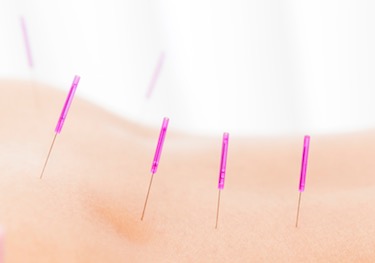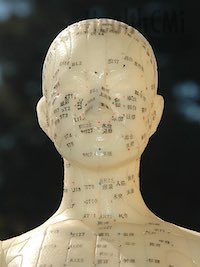Acupuncture immediately and significantly relieves lower back pain. Researchers applied acupuncture to hospital emergency department patients with acute lower back pain in a controlled study. The data indicates that acupuncture is both safe and effective in relieving lower back pain. 
The study evaluated the effects of acupuncture on acute lower back pain patients receiving outpatient care in the emergency department of Changhua Christian Hospital (Taiwan). A true acupuncture group was compared with a sham acupuncture group in this controlled study. True acupuncture was applied to the following acupoints:
- Hegu (LI4)
- Shousanli (LI10)
- Zusanli(ST36)
- Yanlingquan (GB34)
- Taichong (LR3)
All needles were manually stimulated to elicit the de qi response. De qi sensations are often described by patients as dull, heavy, deep pressure, pulling, numb, aching, radiating, electrical, refreshing, and tingling. Acupuncturists may also experience a tugging or electrical sensation on the needle at the arrival of de qi. Needle retention time totaled 15 minutes for each patient.
The true acupuncture group demonstrated a significant reduction in lower back pain within 15 minutes of receiving acupuncture treatment. A three day follow-up interview confirmed lasting results. The true acupuncture group significantly outperformed the sham acupuncture group within 15 minutes of treatment and three days following treatment. The results indicate that true acupuncture has immediate and lasting effects.
A related recent study had similar findings. Acupuncture was found to reduce lower back pain and reduce intervertebral disc degeneration. Electroacupuncture applied to Huatoujiaji acupoints of the lower back were applied for 20 minutes per session, one time per day, for 28 days to all patients in the study.

The investigators documented beneficial biochemical effects initiated by the application of acupuncture. True acupuncture successfully regulated inflammatory cascade biochemicals and sham acupuncture did not. Acupuncture downregulated abnormally high levels of MMP-13 caused by disc compression and upregulated TIMP-1 that had been suppressed by disc compression.
Acupuncture’s ability to reduce pain and inflammation may also be related to its ability to stimulate the expression of CXCL10. Wang et al. found that CXCL10 regulates “opioid-containing macrophages as (a) key regulator of electroacupuncture-induced antinociception.” The researchers note that acupuncture stimulates CXCL10 which, in turn, activates naturally occurring endogenous opioids.
References:
Liu, Yen-Ting, Chin-Fu Chang Chih-WenChiu, Tsung-Chieh Lee, Chia-Yun Chen, Shun-Chang Chang, Chia-Ying Lee, and Lun-Chien Lo. "Efficacy and safety of acupuncture for acute low back pain in emergency department: a pilot cohort study."
Zou, J., G. F. Huang, Q. Zhang, Y. Gao, and B. Y. Wang. "[Effects of electroacupuncture stimulation of" Jiaji"(EX-B 2) on expression of matrix metalloproteinase-13 and tissue inhibitor of metalloproteinase-1 in intervertebral disc tissue in rabbits with lumbar intervertebral disc degeneration]." Zhen ci yan jiu, 39, no. 3 (2014): 192-197.
Wang, Ying, Rebekka Gehringer, Shaaban A. Mousa, Dagmar Hackel, Alexander Brack, and Heike L. Rittner. "CXCL10 Controls Inflammatory Pain via Opioid Peptide-Containing Macrophages in Electroacupuncture." PloS one 9, no. 4 (2014): e94696.


